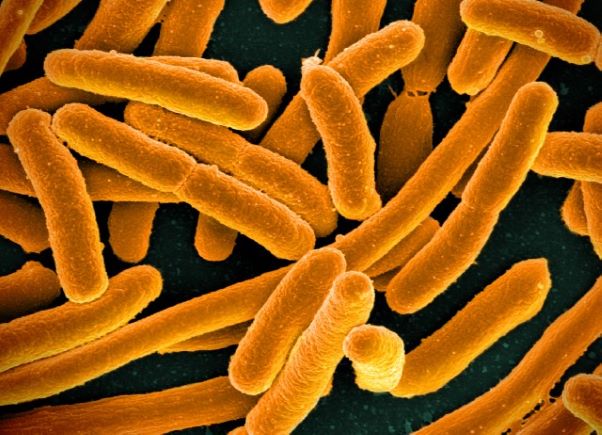The Yin and Yang of Microbial Influences on the Liver Disease Primary Sclerosing Cholangitis
 Credit: National Institute of Allergy and Infectious Diseases, National Institutes of Health. Used under a CC BY-NC 2.0 DEED license.
Credit: National Institute of Allergy and Infectious Diseases, National Institutes of Health. Used under a CC BY-NC 2.0 DEED license.
Studies in an animal model of primary sclerosing cholangitis (PSC), and in samples from adults with the disease, reveal gut microbes’ vital role in both countering and fueling this form of chronic liver disease. PSC results from autoimmune-driven inflammation and fibrosis (scarring) that block the ducts that carry bile out of the liver. These blockages cause bile to accumulate, leading to further damage and possibly liver failure. Males are more likely to develop PSC, which often occurs together with other autoimmune conditions. Factors influencing disease development and progression are unclear, and available treatments are limited to surgeries to re-open the bile ducts. Past research in people with PSC suggested that gut microbes might play a role, though exactly which species were protective or detrimental was unknown.
To probe this important question, scientists studied an animal model of PSC: male and female mice that were genetically altered to develop features of the disease. They raised some of the mice under germ-free conditions and inoculated other mice with specific microbes, then tracked their overall survival, weight, liver enzymes and fibrosis, gut microbes, and genetic and metabolic products. Overall, the presence of gut microbes was beneficial—mice that had been raised in sterile conditions gained lower than normal amounts of weight as they grew and had elevated liver enzymes and bile, bile duct damage resembling PSC, and shortened lifespans, compared to similar mice with gut microbes. The fates of each group could be switched by changing their microbes—either by giving germ-free mice a fecal microbial transplant from the other group, or by giving antibiotics to the mice with microbes. By studying these mice and the effects of different antibiotics, the researchers were able to identify bacteria that exerted protective or pathogenic effects. Bacteria in the Lachnospiraceae family protected against liver damage while those in the Escherichia genus promoted it. Relevance to human PSC was tested through analyses of the bacteria in stool samples from Norwegian and German studies of men and women with PSC. These human PSC samples supported the mouse findings, with the presence of Lachnospiraceae bacteria correlating with better disease outcomes and some Escherichia bacteria correlating with more severe disease. Antibiotic use in people with PSC also appeared to shift the balance of these bacteria toward species associated with worse disease.
Results from this study of PSC help form the knowledge base needed to enable more individualized predictions of disease progression based on the balance of beneficial and harmful microbes present. These results may also inform the development of personalized, microbe-based approaches to therapy for this liver disease.
